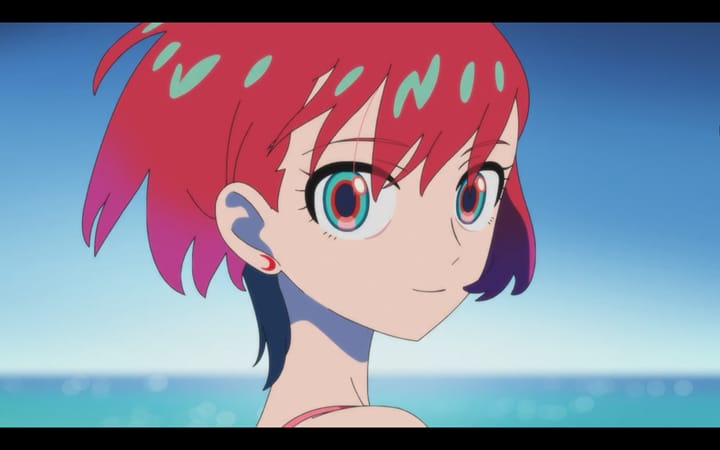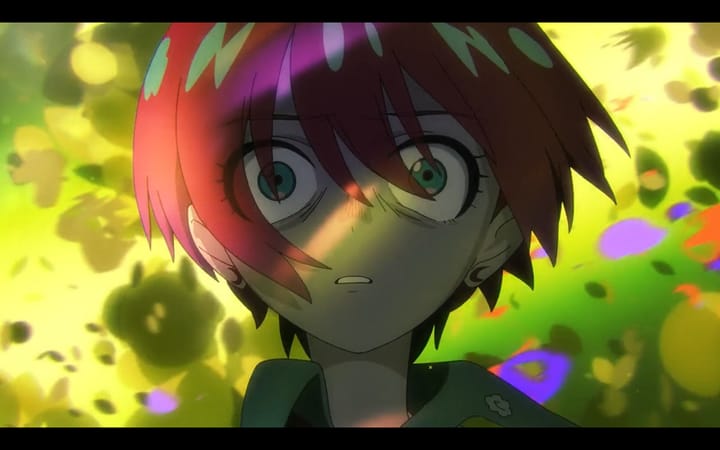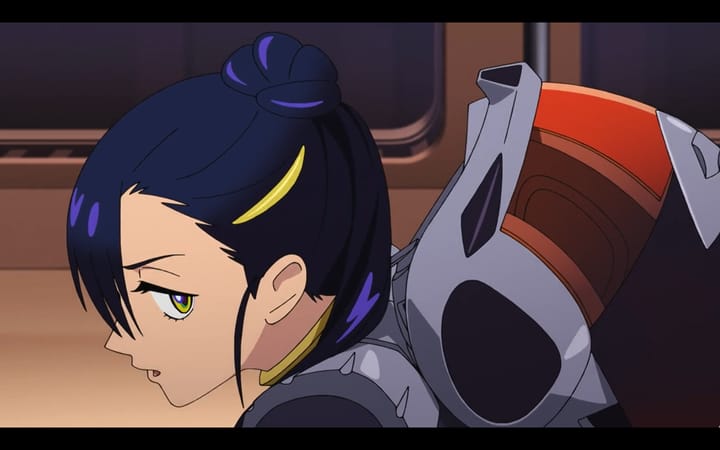Adults Don't Deserve Rights: The Anger of Alien Nine
Sometimes adolescence is weird and gross. But sometimes society itself is the problem. That's Alien Nine.
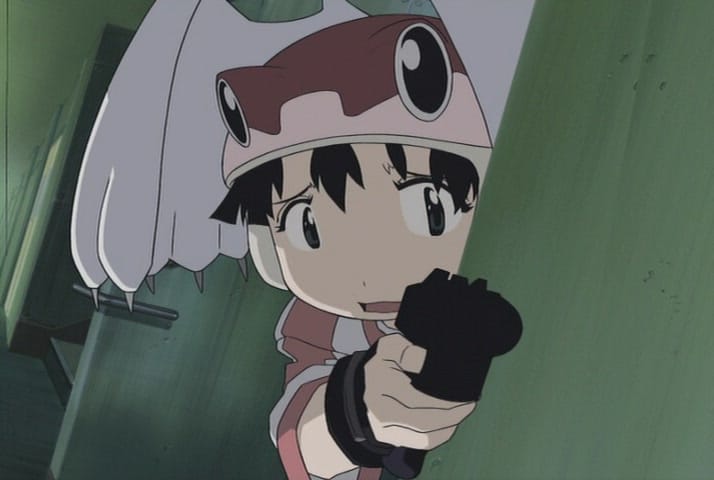
Welcome to ANIWIRE! Today we’re discussing the cult early 2000s OVA Alien Nine. Before that, though, here’s some recent news in the anime and manga world.
News
- Another influential Japanese illustrator, Mutsumi Inomata, passed away recently. I recommend reading this piece by Jonathan Clements if you’d like to read more about her career.
- Science Saru released a trailer for Kimi no Iro, Naoko Yamada’s new film. Looks to be another banger.
- Independent manga publisher Glacier Bay Books has a new Kickstarter running for four new books, plus early pre-orders. I recommend checking this out if only to reserve a copy of the upcoming book by Natsujikei Miyazaki.
- Lots of new announcements in the wake of AnimeJapan 2024. I'm excited for the upcoming Mononoke film despite all the controversy following in its wake.
- I’m also keeping an eye on the upcoming MAYONAKA PUNCH, by the creative team that brought us Ya Boy Kongming!
Bookmarks
- For IGN, Rebekah Valentine interviewed composer Yoko Shimomura (Kingdom Hearts, Live a Live) in advance of her winning a Lifetime Achievement Award at this year’s Game Developers Choice Awards.
- Also for IGN, Kambole Campbell reviewed the upcoming film The Concierge. I’m excited for this one!
- For Aftermath, Gita Jackson wrote about the very dumb reason why they can’t play Final Fantasy VII. That counts as anime, right?
- For Black Nerd Problems, Carrie wrote about manga auto-biography.
- For Analog Housou, wah wrote about the new film Gundam Seed Freedom.
- Kastel wrote about the obscure indie Japanese RPG NonStories.
What I Wrote
For Comics Beat, I interviewed MediaOCD head Justin Sevakis about acquiring AnimEigo, one of the oldest and most prestigious anime distributors in the United States. Meanwhile on Unpacking the Shelf, my friend Alex and I chatted about the bombastic limited comic series 20th Century Men.
AMV of the Week
Here’s “Heartbeat of Spring” by TrebleClef.
The following piece includes discussion of violence against children. Reader discretion advised.
The creature bangs its fist against the classroom door. Children cower inside. Outside, a girl named Yuri clutches a gun in her hand. An alien sits on her head: the hat-shaped, toad-faced Borg. That Borg could tear the invading creature to shreds with its hidden drills. Yet Yuri’s teacher told her not to rely on the alien. Carry your share of the weight, she said. Yuri doesn’t want to be a burden to her teacher or her friends. She pulls the trigger of the gun again and again. The bullets miss and they are so small.
That is Alien Nine. A three-volume comic series published in 1998 by Hitoshi Tomizawa, it tells the story of three elementary school girls chosen by their classmates to pair with the Borg and hunt local aliens. Yuri is the crybaby, her classmate Kumi is the reliable one, and valedictorian Kasumi is just weird. The series was adapted into a 4 episode OVA (limited video series) between 2001 and 2002. Jiro Fujimoto and Yasuhiro Irie split directorial duties, with Irie also handling the character designs and several other tasks. The adaptation ends at the halfway point with a cliffhanger that (perhaps) fractures Yuri’s bond with her classmates beyond repair.

Tomizawa was reportedly inspired by classic science fiction authors including Larry Niven and Robert Heinlein. In this respect he’s not so different from folks like Hideaki Anno, who borrowed liberally from his favorites while directing 1995 anime classic Neon Genesis Evangelion. I’d also link Tomizawa with Mohiro Kitoh, whose own 1998 manga series Narutaru remains the cruelest Pokemon riff of all time.
The pitch for Alien Nine is simple, really. It’s a “cruel things happening to cute girls” show. The girls are 12 years old and doing their best. The aliens are chitinous and/or slimy, ranging from many-legged insectoids to intelligent house-sized whale frogs. The “friendly” ones hide secrets of their own. On a good day Yuri comes home teary-eyed with a stained uniform. On a bad day somebody dies, or is transformed into an alien themselves. Fun stuff!
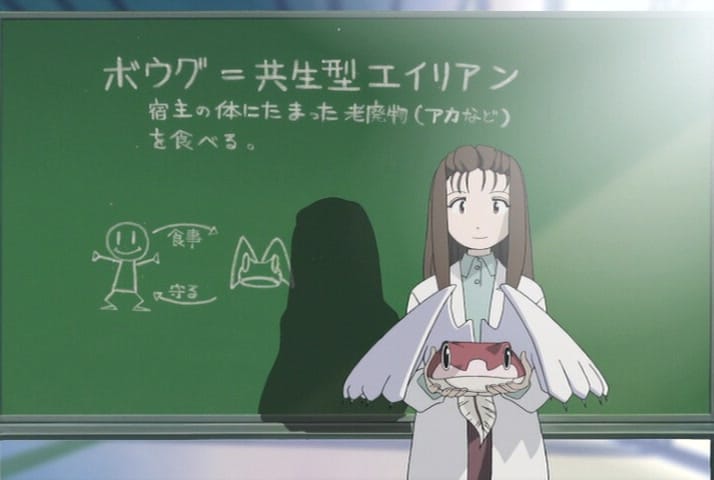
Alien Nine is a story about puberty. Put on your alien hat, it’s good for you. Don’t worry too much about the wet stuff. Oh, your body is changing? That happened to me too. Adulthood is not just something that you can opt out of. Yuri is growing up. Her dreams are haunted by aliens that insist that everybody will one day become just like them. Her body is a time bomb. So are the bodies of her friends.
There’s a fetishistic element that runs through the series too. The Borg feed themselves by licking the backs of their hosts with their frog-like tongues. A trio of boys ambush Yuri in a shed with their own phallic alien hats. In the final episode, one of the girls is swallowed, digested and excreted by a giant alien that controls people’s minds. I don’t know whether Tomizawa is working through something or if he’s drawing to satisfy the audience reading the manga. I do know that Alien Nine’s successor, Milk Closet, is even more unhinged.
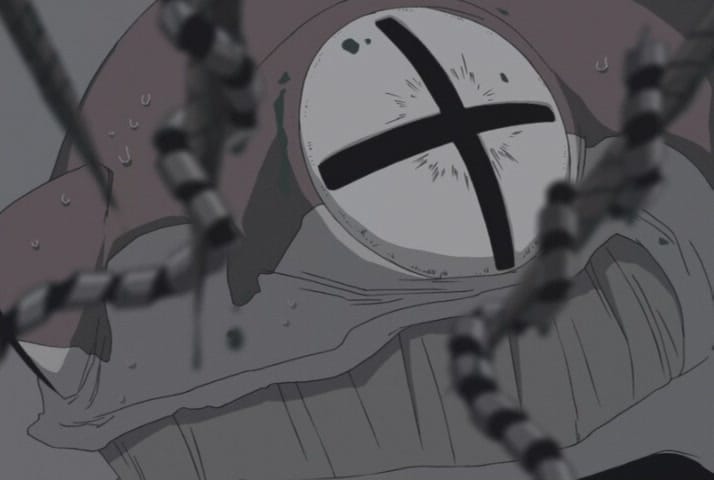
What stands out to me most in Alien Nine though isn’t adolescence or sex. It’s Yuri's anger and frustration. She isn’t hunting aliens because she wants to. Her classmates elected her as their representative. Her mother thinks it isn’t a big deal. Her friends wonder why Yuri can’t simply be better at hunting aliens. Her Borg can’t believe that the human they’ve been paired with is such a crybaby. Her teacher, Megumi, wants Yuri to stop worrying so much and just get on with it. We later find out that Megumi is responsible for the “alien invasion.” She requests creatures by mail order and carefully plans out each encounter. She may even be an alien herself.
Adults often make children do things “for their own good.” After all, children are young and don’t know how their bodies work. They might not have enough room for dinner if they eat a cookie before instead of after. They might never learn to swim if they’re scared of the water. They might think punching their friends is acceptable when they lose to them in bowling, unless you take them aside and tell them firmly that is not acceptable. Certainly there have been times in my life when I’ve been thankful that an adult encouraged me to do something I didn’t want to do.

When it comes down to it, though, Yuri is wrapped up in something a lot worse than cookies, swimming or bowling. She’s sharing her body with a symbiote to fight aliens. The adults in her life lie to her about where these aliens come from and whether they pose a danger to her. Worse, those adults are bad at their job.
In the second episode, Yuri’s teacher Megumi miscalculates exactly how much stress Yuri can bear. She puts her in a situation where Yuri’s Borg overloads. Yuri destroys all of Megumi’s caged aliens and then kills the other two Borg. She stumbles through her school crying the tears of the damned. Only her friend Miyu, an ordinary student without a Borg of her own, is able to calm her down.

One of the few benefits (or weaknesses?) of the Borg is that their carriers share a psychic link. Kumi and Kasumi quickly realize that Yuri’s feelings are genuine because they are infected by them. In the third episode, they take her to the beach over summer break in the hopes that she might recover. Throughout their time there they accept Yuri’s fears and offer support rather than deny or belittle them.
Alien Nine is a story that believes if you put hurting kids in a room together, they will help each other rather than hurt each other so long as they recognize each other’s pain. In that respect it is quite optimistic. The problem is that the girls will have to go back to school eventually, and that school is made to destroy them. Not for their own good, or because the world will be in danger otherwise. But because their teacher Megumi and the school board have their own designs that must be carried out no matter what.
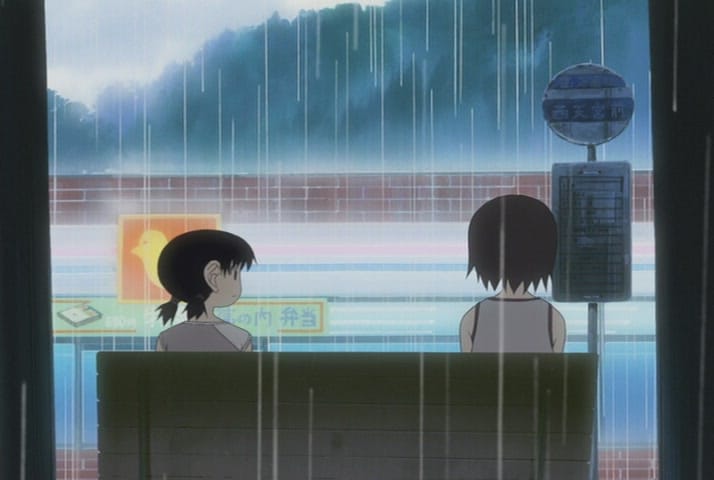
I’m reminded of horror manga artist Kazuo Umezz. In his 1972 horror manga The Drifting Classroom, an elementary school is transported from the present into a sun-blasted future. The children rally heroically, but the teachers go crazy. They either try to kill themselves, each other or the children. Only the protagonist’s mother, who communicates with him psychically from the present, is presented as a sympathetic adult figure.
Umezz’s worlds repeatedly put children in conflict with adults in this way. Sometimes these adults physically or sexually abuse the children, as in My Name is Shingo or Left Hand of God, Right Hand of the Devil. I don’t think Umezz handles these moments in a particularly thoughtful way. But it all comes out of a major theme of his work: that children are adaptable, and adults are inflexible. As Helen Chazan wrote for Comics Journal, the family can and will betray you.
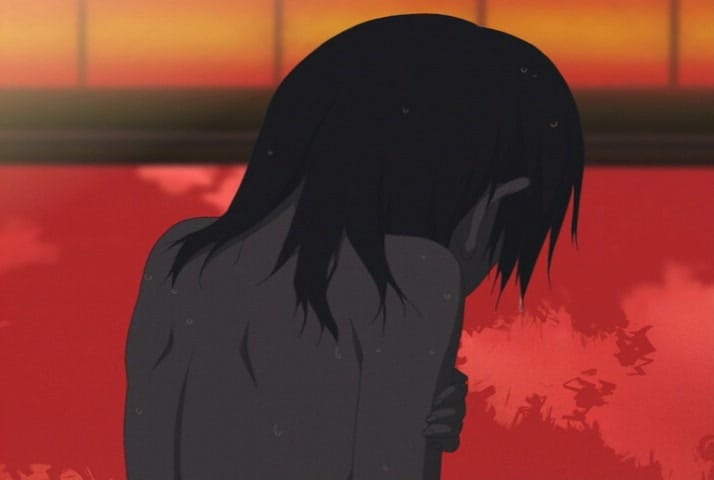
The world we adults have prepared for the next generation is rapidly being warmed by climate change. Meanwhile, children are dying in Gaza. Politicians in the United States insist that proceduralism takes precedence over meaningful change. Rather than push for gun control or corporate accountability, they ban Tik Tok. The needs of the old, wealthy and powerful are prioritized over the lives of their children. How dare they?
In the world of Alien Nine, children hide from aliens behind closed doors while their elected peers fight futilely with rigged weapons. It is an absurd, hypocritical system from which there is no escape. Only the cynicism of the 1990s could have birthed a story like this. Yet I am convinced without a doubt that the world we inhabit today is even more unfair and broken than any pressure cooker Hitoshi Tomizawa could create. Then and now, the lesson remains the same: kids are all right, but adults don’t deserve rights.
